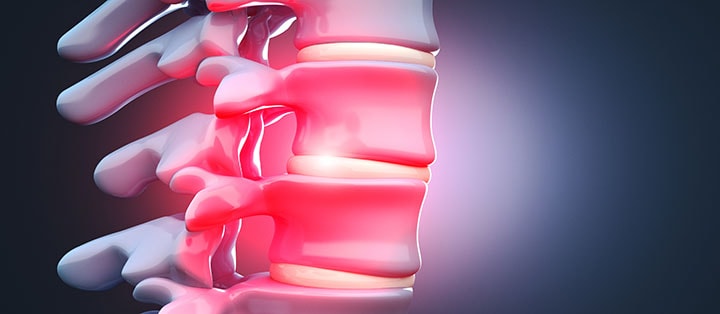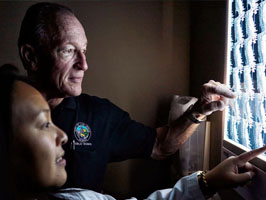Failed back surgery syndrome (also called FBSS, or failed back syndrome) is a misnomer, as it is not actually a syndrome - it is a very generalized term that is often used to describe the condition of patients who have not had a successful result with back surgery or spine surgery and have experienced continued pain after surgery.

Failed Back Surgery Syndrome Causes
• Incorrect DiagnosisSpine surgery is basically able to decompress a nerve root that is pinched, or stabilize a painful joint. An anatomical injury that is a probable cause of back pain must be identified prior to rather than after back surgery or spine surgery. By far the number one reason back surgeries are not effective and some patients experience continued pain after surgery is because the injury that was operated on is not in fact the cause of the patient’s pain.
• Failure of Solid Fusion After Spine Surgery
When the fusion is for back pain and/or spinal instability, there is a correlation (although weak) between obtaining a solid fusion and having a better result of the spine surgery. If a solid fusion is not obtained through the spine surgery, but the hardware is intact and there is still good stability to the spine, the patient may still achieve effective back pain relief with the spine surgery. In many cases, achieving spinal stability alone is more important than obtaining a solid fusion from the spine surgery.
On postoperative imaging studies it is often very difficult to tell if a patient’s spine has fused, and it can be even harder to determine if a further fusion surgery is necessary. In general, it takes at least three months to get a solid fusion, and it can take up to a year after the spine surgery. For this reason, most surgeons will not consider further spine surgery if the healing time has been less than one year. Only in cases where there has been breakage of the hardware and there is obvious failure of the spinal construct would back surgery be considered sooner.
• Implant Failure in Spine Surgery
An instrumented fusion can fail if there is not enough support to hold the spine while it is fusing. Therefore, spinal hardware (e.g. pedicle screws) may be used as an internal splint to hold the spine while it fuses after spine surgery. However, like any other metal it can fatigue and break (sort of like when one bends a paper clip repeatedly). In very unstable spines, it is therefore a race between the spine fusing (and the patient’s bone then providing support for the spine), and the metal failing.
Metal failure (also called hardware failure, implant failure), especially early in the postoperative course after back surgery, is an indicator of continued gross spinal instability. The larger a patient is and the more segments that are fused, the higher the likelihood of implant failure. Implant failure following spine surgery should be very uncommon in normal sized individuals with a one level fusion.
• Transfer Lesion to Another Level after a Spine Fusion
A patient may experience recurrent pain many years after a spine fusion surgery. This can happen because the level above or below a segment that has been successfully fused can break down and become a pain generator.
This degeneration is most likely to happen after a two-level fusion (e.g. a fusion for L4-L5 and L5-S1 levels) and in a young patient (in the 30-50 year old age range).
It is much less likely to happen if only the L5-S1 level is fused, as this segment typically does not have much motion and fusing this level does not change the mechanics in the spine all that much.
Most of the motion in the spine is at the L4-L5 level, and to a lesser extent at L3-L4. When the L4-L5 level is included in the spine fusion it transfers a lot of stress to L3-L4. This does not present as much of a problem for elderly patients, since they tend to not be as active nor do they have the fusion for as many years.
Transfer lesions are far more common in degenerative osteoarthritis conditions ( e.g. degenerative spondylolisthesis) and far less common in disc degeneration problems (e.g. degenerative disc disease or isthmic spondylolisthesis).ransfer lesions are far more common in degenerative osteoarthritis conditions ( e.g. degenerative spondylolisthesis) and far less common in disc degeneration problems (e.g. degenerative disc disease or isthmic spondylolisthesis).
• Lumbar Decompression Back Surgery Failure
The nerve root can take a long time to heal from a lumbar decompression (such as a discectomy, microdiscectomy or laminectomy), making it difficult to gauge the outcome of the surgery.
In general, if a patient is getting better within three months of the surgery, he or she should continue to get better. If there has not been any improvement in the pain approximately three months after the decompression, then the back surgery can be assumed to be unsuccessful, and further work up would be reasonable.
During the first three months, the success of the back surgery really cannot be judged, and it is often too early to describe the procedure as either a successful or failed back surgery.
Lumbar Microdiscectomy
Decompression of the lumbar spine will usually relieve the patient’s leg pain directly after the back surgery. However, for 10-20% of patients, the pain will continue until the nerve starts to heal. In some cases, the pain may even be worse for a while after the back surgery because operating around the nerve root creates some increased swelling and this leads to pain.
It usually takes far longer for symptoms of numbness/tingling or weakness to resolve, and sometimes it can take up to a year for these symptoms to subside. If these symptoms persist after a year, they probably represent permanent nerve damage and are unlikely to resolve.
• Recurrent Stenosis or Herniation after Decompression
Years after decompression (lumbar laminectomy), lumbar stenosis can come back (the bone can grow back) at the same level, or a new level can become stenotic and cause back pain or leg pain.
Pain that is relieved right after surgery but then returns abruptly is often due to a recurrent lumbar disc herniation. Recurrent lumbar disc herniations happen to about 5% to 10% of patients, and they are most likely to occur during the first three months after back surgery.
Technical Problems after Lumbar Decompression Surgery
Three potential technical problems that cause the pain after surgery to continue include:
Missed fragment (of the disc or bone) is still pinching the nerve
The back surgery operation was done at the wrong level of the spine
Dissection of the nerve root may cause further trauma.
Nerve damage during a discectomy or a lumbar decompression is very uncommon, but has been reported in about 1 in 1,000 cases. When it does occur during back surgeries, a permanent neurological deficit with new weakness in a muscle group is possible, and a postoperative EMG (electromyography) can be helpful to see if there has been nerve damage and if there is any reinnervation (nerve healing) after the back surgery.
At times, decompressing a nerve root through back surgery will cause it to become more inflamed and lead to more pain temporarily until the inflammation subsides.
• Inadequate Decompression of a Nerve Root after Surgery
Decompressing a nerve root with back surgery is not always successful, and if a portion of the nerve root is still pinched after the back surgery there can be continued pain. If this is the case, there will usually be no initial pain relief following the back surgery, and subsequent postoperative imaging studies may show continued spinal stenosis in a portion of the lumbar spine.
• Scar Tissue Formation after Back Surgery
car tissue formation is part of the normal healing process after back surgery. While scar tissue can be a cause of pain, actual scar tissue pain is very rare since the tissue contains no nerve endings. Rather, the principal mechanism of pain is thought to be the binding of the lumbar nerve root by fibrous adhesions, called epidural fibrosis. Postoperative stretching exercises can help decrease the effects of postoperative scarring around the nerve root.
All patients will heal with scar tissue after back surgeries as this is the only way to heal. The reality is that although scar tissue is often clinically the reason given for continued pain after surgery, it is probably rarely the cause of postoperative pain. Particularly in patients that have similar pain postoperatively to what they had before surgery, it is unlikely that the addition of scar tissue has any clinical relevance.
However, clinicians often use the explanation of scar tissue as the cause of continued pain, whether or not there is any evidence that this is in fact the patient's pain generator. Often, a better explanation for continued pain after surgery is that either the patient has a secondary problem that needs to be addressed, or that the lesion operated on was not in fact the source of the patient's pain. These are far more likely scenarios than actual scar tissue pain.
• Improper and/or Inadequate Postoperative Rehabilitation
After an incorrect preoperative diagnosis and subsequent spine surgery, improper and/or inadequate postoperative rehabilitation is probably the second most common cause of continued back pain after surgery.
It often takes months to a year to heal after many of these back surgeries, and a postoperative rehabilitation program that includes stretching, strengthening and conditioning is an important part of any successful spine surgery.
In general, the bigger the back surgery and the longer a patient has had their preoperative symptoms, the longer and harder the postoperative rehabilitation will be. It is often far more reasonable to continue with rehabilitation after spine surgery than to consider further surgery (with some exceptions, such as if there has been a recurrent disc herniation).
• Secondary Problems after Spine Surgery
Often, there are other secondary problems that must be worked out after back surgery. For example, a patient with a pinched L5 nerve root from a disc herniation may still need physical therapy afterward because they may have a secondary piriformis syndrome. Unpinching the L5 nerve root may relieve the radiculopathy (sciatica) but the patient still has pain in the buttocks from continued muscle spasm in the piriformis. Until this is worked out, the patient will not feel like the back surgery is successful.
Many times, spine surgery is necessary to provide enough back pain relief for the patient to start a rehabilitation program, but it should only be one component of the patient’s healing process. Unfortunately, some patients feel that if they have had back surgery they have been “fixed” and no further treatment is necessary. However, this is rarely true, and continued therapies and rehabilitation are usually necessary for a successful outcome.

